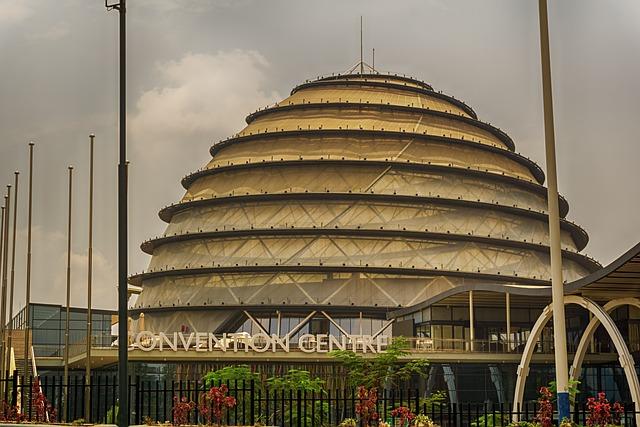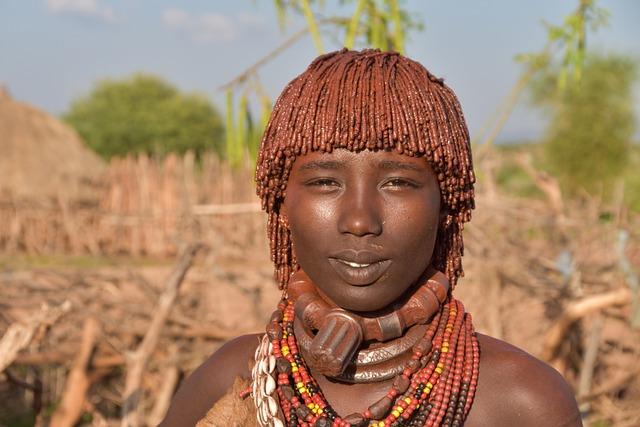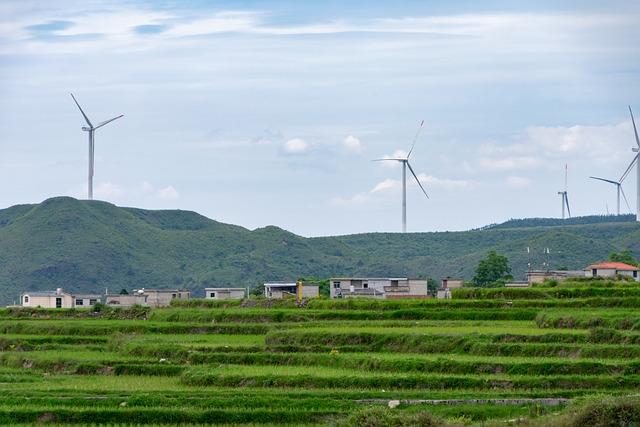Over the previous twenty years, Africa has witnessed a profound transformation in its imaginative and prescient of development, characterised by means of a shift in opposition to homegrown answers and visionary management. This modification has been particularly obvious in international locations like Rwanda and Ethiopia, the place executive methods have redefined standard developmental paradigms. In a revealing find out about revealed by means of The Dialog,researchers delve into the cutting edge approaches followed by means of those nations,highlighting their distinctive methods for fostering financial enlargement and social development. By means of inspecting the successes and demanding situations confronted by means of Rwanda and Ethiopia, the find out about no longer best sheds gentle on their developmental trajectories but additionally provides insights into the wider implications for African international locations striving to form their futures. Because the continent grapples with problems with governance, sustainability, and social fairness, this exploration underscores the significance of context-specific fashions and the ability of native company in crafting pathways to development.
Transferring Paradigms: An Evaluation of Building Methods in Africa
The panorama of building methods in Africa has passed through significant transformation, in particular in international locations like Rwanda and Ethiopia. Those nations have moved past conventional paradigms ruled by means of overseas support and are now exploring paths focused on sustainable enlargement and homegrown answers. Such methods surround a mix of political steadiness, financial reforms, and investments in human capital. Via powerful governance frameworks, Rwanda and Ethiopia illustrate how visionary management has performed a pivotal position in shaping building insurance policies that don’t seem to be best efficient but additionally culturally related and broadly supported by means of the inhabitants.
Central to this moving paradigm is the include of innovation and generation as catalysts for development. Each international locations have prioritized the advance of infrastructure, bettering connectivity and accessibility to assets. Some key parts in their methods come with:
- Agro-industrial insurance policies to reinforce meals safety and employment.
- Instructional reforms geared toward growing a talented team of workers able for the calls for of a contemporary economic system.
- Public-private partnerships to power investments and stimulate enlargement in more than a few sectors.
- Regional cooperation via projects just like the african Continental Unfastened Industry Space (AfCFTA).
This holistic method ceaselessly sufficient interprets to tangible results, as evidenced by means of measurable enhancements in GDP enlargement charges and poverty relief. The desk beneath highlights those achievements:
| Nation | GDP Enlargement Charge (2022) | Poverty Charge Exchange (2010-2022) |
|---|---|---|
| Rwanda | 7.5% | -15% |
| Ethiopia | 6.2% | -22% |
RwandaS Imaginative and prescient 2050: A Blueprint for Social and Financial Transformation

Rwanda’s Imaginative and prescient 2050 embodies an entire technique geared toward propelling the country in opposition to a knowledge-based, middle-income economy whilst making sure social inclusivity. This strategic plan emphasizes the most important spaces corresponding to financial diversification, technological innovation, and sustainable building. By means of fostering a business-kind setting, the Rwandan executive targets to draw each native and overseas investments, which might be crucial for infrastructure building and process advent. The focal point isn’t only on financial metrics; social signs corresponding to training, well being care, and environmental sustainability also are prioritized to toughen the total high quality of lifestyles for Rwandans.
Key projects beneath Imaginative and prescient 2050 come with:
- Funding in Human Capital: Bettering training and vocational coaching to construct a professional team of workers.
- Virtual Transformation: Selling get right of entry to to generation and virtual services and products to stimulate enlargement in more than a few sectors.
- Inexperienced Projects: Committing to environmentally pleasant practices to struggle local weather alternate.
- Regional Integration: Strengthening ties with neighboring nations to spice up business and financial collaboration.
to successfully track the development of those projects, the Rwandan executive has established measurable milestones via an in depth motion plan that underscores responsibility and openness. The next desk summarizes the most important objectives and goal timelines:
| Function | Goal 12 months | Development Signs |
|---|---|---|
| Reach middle-income standing | 2035 | GDP consistent with capita of $1,200 |
| Common well being protection | 2025 | Greater get right of entry to to healthcare services and products |
| Build up literacy charges | 2030 | No less than 95% literacy amongst adults |
| Environmental sustainability | 2050 | Cut back carbon emissions by means of 50% |
With a transparent imaginative and prescient and a strategic method, rwanda positions itself as a fashion for different African international locations striving for transformative enlargement and sustainable building within the coming a long time.
Ethiopia’s Enlargement Plan: Balancing Financial Enlargement with Inclusivity

Ethiopia’s formidable roadmap for financial growth highlights the crucial want for inclusivity to make certain that enlargement advantages all segments of society. As the rustic hurries up in opposition to its objectives, the federal government targets to increase strategic sectors corresponding to agriculture, production, and generation. This growth isn’t simply about expanding GDP; it incorporates a broader imaginative and prescient of bettering residing requirements and lowering poverty. Key projects come with:
- Funding in Infrastructure: The advance of roads, power, and telecommunications to give a boost to financial actions.
- Activity Introduction: Fostering entrepreneurship and empowering small and medium-sized enterprises to stimulate native economies.
- Schooling and Talent Building: Making sure that the team of workers is provided with the essential abilities to take part in a contemporary economic system.
Regardless that, reaching sustainable enlargement calls for a willing focal point on social fairness. The Ethiopian executive acknowledges that fast financial development will have to no longer come at the price of social brotherly love. To steadiness those dynamics, insurance policies that advertise gender equality, environmental sustainability, and equitable useful resource distribution are being prioritized. A clear governance framework is very important to handle disparities and interact communities in the advance procedure. the next desk illustrates some methods being carried out to foster inclusivity:
| Technique | Goal |
|---|---|
| Inclusive Coverage Design | Attractive marginalized teams in decision-making. |
| Social Protection Nets | Protective inclined populations from financial shocks. |
| network Building Methods | Offering native assets for sustainable projects. |
Courses from Rwanda and Ethiopia: Efficient Governance and Coverage Implementation

The case research of Rwanda and ethiopia exhibit distinct but instructive approaches to governance and coverage implementation. Each international locations have embraced a imaginative and prescient of building that prioritizes financial enlargement,social steadiness,and state-led reforms. Rwanda’s post-genocide restoration demonstrates an intense focal point on development nationwide harmony and selling a citizen-centric method inside governance constructions. The federal government has applied a mixture of top-down directives and network engagement to foster inclusivity, resulting in enhanced carrier supply. In a similar fashion, Ethiopia’s developmental state fashion emphasizes agricultural transformation and industrialization as keystones for financial development, channeling important investments into infrastructure building and human capital enlargement.
Key classes highlighted from those reviews come with the significance of robust management and an emphasis on responsibility. Each nations have carried out rigorous efficiency tracking techniques to make certain that insurance policies translate into tangible results.This has been facilitated via more than a few way, corresponding to:
- Common audits and opinions of presidency methods.
- Public boards to assemble citizen comments.
- Strategic partnerships with global organizations to give a boost to capability development.
Moreover, Ethiopia’s focal point on decentralization permits regional governments to tailor their approaches to native wishes, demonstrating that adaptability can supplement a broader nationwide schedule. By means of finding out from those examples, different African international locations can adapt in a similar fashion powerful frameworks to ascertain efficient governance constructions that propel building whilst fostering resilience in opposition to long run demanding situations.
Long run Implications: Suggestions for Sustainable building in Africa

To foster sustainable building throughout Africa, a number of key methods will have to be prioritized. Funding in training and talent building is very important, as an informed team of workers can power innovation and flexibility in increasingly more complicated economies. Moreover, bettering infrastructure via sustainable practices will allow higher connectivity, lowering obstacles to business and get right of entry to to services and products. Governments will have to additionally focal point on collaborative regional partnerships that advertise cross-border projects, enabling shared assets and data switch which might be important for escalating financial alternatives.
Moreover, integrating inexperienced applied sciences and practices into business actions won’t best mitigate environmental affects but additionally stimulate financial enlargement. A dedication to sustainable agriculture is the most important, because it guarantees meals safety whilst holding herbal assets. Policymakers will have to additionally inspire community-led projects that empower local populations to take fee in their building. the status quo of tracking and analysis frameworks can systematically observe development, making sure that those efforts yield tangible results through the years.
Bridging Gaps: Collaborative Approaches to regional Building demanding situations

the evolving panorama of building in Africa represents a vital shift in opposition to collaborative methods that cope with regional demanding situations. Rwanda and Ethiopia stand at the leading edge of this alteration, using a variety of cutting edge approaches that foster partnerships throughout more than a few sectors. Those come with:
- public-Personal Partnerships: by means of leveraging assets, experience, and innovation from each the federal government and personal sector, those nations have controlled to put into effect large-scale initiatives that power financial enlargement.
- Group Engagement: Involving native communities within the making plans and execution of building projects guarantees that initiatives are adapted to the precise wishes and aspirations of the other people they serve.
- cross-Border Collaboration: By means of operating in combination with neighboring nations, Rwanda and Ethiopia can take on commonplace demanding situations such as business obstacles, infrastructure deficits, and environmental problems extra successfully.
Additionally, each international locations have embraced generation as a catalyst for alternate, integrating virtual answers into their building frameworks. The following desk highlights key methods hired by means of Rwanda and Ethiopia of their collaborative efforts:
| Technique | Rwanda | Ethiopia |
|---|---|---|
| Healthcare Innovation | Telemedicine techniques for rural get right of entry to | Cellular well being packages |
| Agricultural Building | Cooperative farming fashions | Use of drones for crop tracking |
| Schooling Get admission to | On-line finding out platforms | Scholarship methods for rural early life |
This strategic alignment no longer best complements the socio-economic landscape of the areas but additionally lays a forged basis for sustainable enlargement and building someday. As those nations navigate the complexities of their building trips, the emphasis stays firmly on collaboration, innovation, and community-driven answers which are crucial in selling resilience and flexibility within the face of rising demanding situations.
Ultimate Ideas
the evolving visions of building throughout Africa, in particular in Rwanda and Ethiopia, illustrate a fancy tapestry of ambition, technique, and adaptation. Because the find out about highlights, each international locations have hired distinctive approaches to navigate their paths in opposition to financial enlargement and societal development, each and every knowledgeable by means of their distinct previous contexts, governance fashions, and socio-economic demanding situations. The reviews of Rwanda and Ethiopia serve no longer best as examples of nationwide choice but additionally as a lens in which broader continental developments may also be tested.As different African international locations glance to those fashions for inspiration, it turns into increasingly more transparent {that a} one-size-fits-all method is inadequate; building will have to be adapted to the distinctive instances and aspirations of each and every nation.On this technology of fast alternate, the teachings drawn from those case research may considerably affect long run insurance policies and collaborations around the continent, shaping the narrative of Africa’s developmental adventure for many years to come.
Source link : https://afric.news/2025/03/10/visions-of-development-have-shifted-in-africa-over-the-past-two-decades-study-explores-how-rwanda-and-ethiopia-tried-to-shape-the-future-the-conversation/
Writer : Atticus Reed
Post date : 2025-03-10 16:43:00
Copyright for syndicated content material belongs to the connected Source.



